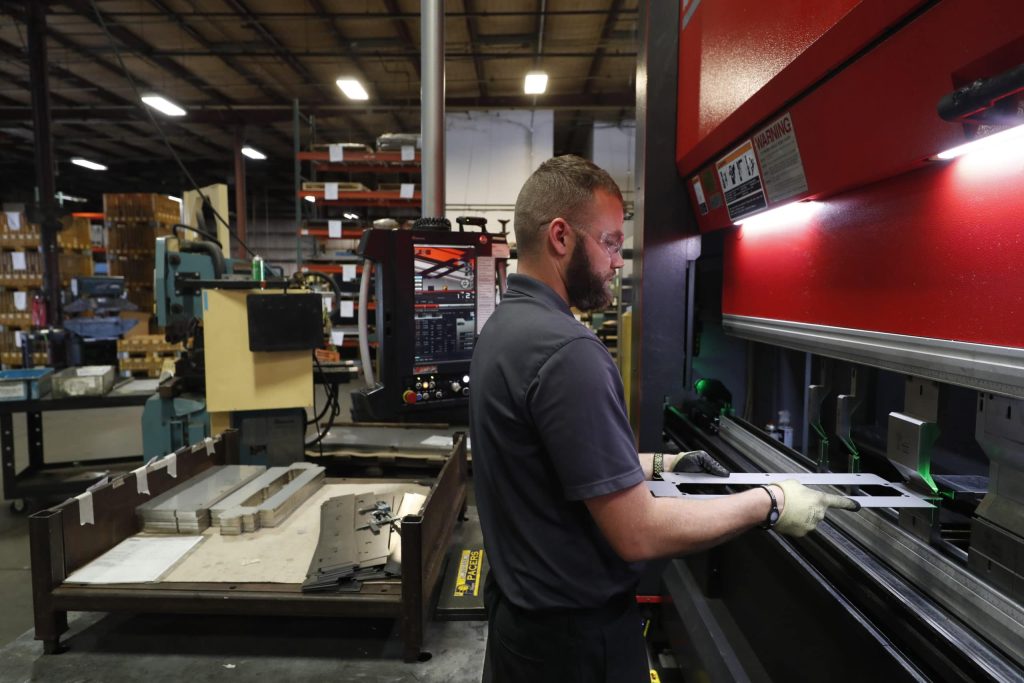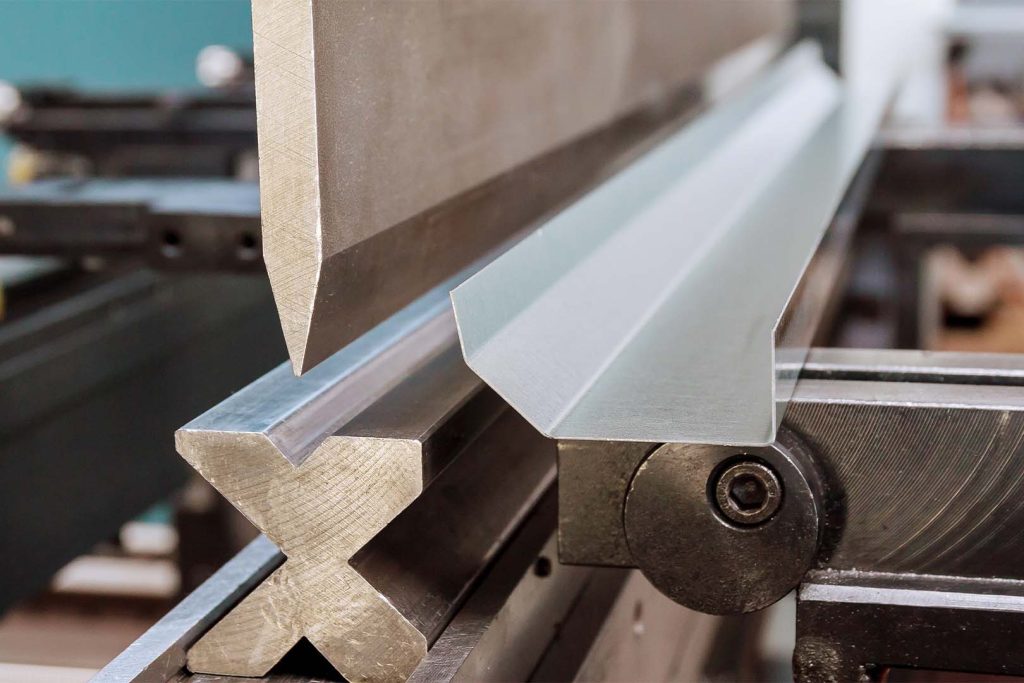Table of Contents
- Frequently Asked Questions
- What tools are needed for sheet metal fabrication?
- What materials can be used for sheet metal fabrication?
- What are some common sheet metal fabrication techniques?
- What are some common mistakes to avoid when fabricating sheet metal?
- What are some tips for achieving high-quality sheet metal fabrication results?
Are you a car enthusiast looking to upgrade your ride? Knowing how to fabricate sheet metal on cars is an essential skill to create unique and personalized designs. Whether you are looking to add a custom hood, fenders, or body panels, this guide will provide you with the knowledge and tools to turn your vision into a reality.
With the help of this guide, you will learn the step-by-step process of sheet metal fabrication, including cutting, shaping, and welding techniques. You will also discover the essential tools and materials needed to create a professional-grade finish. So, roll up your sleeves and get ready to take your car’s appearance to the next level with sheet metal fabrication.
- First, measure the area of the car where you need to fabricate sheet metal.
- Next, choose the appropriate gauge of sheet metal for the job.
- Use a metal cutting tool to cut the sheet metal into the desired shape and size.
- Once the sheet metal is cut, use a metal brake to bend it to the correct angle.
- Finally, use a welder to attach the sheet metal to the car, making sure to grind down any rough edges.
H2: How to Fabricate Sheet Metal on Cars?
Sheet metal fabrication is an essential skill for car enthusiasts and mechanics alike. Creating custom body panels, repairing rust damage or modifying a vehicle’s exterior requires knowledge of sheet metal fabrication. In this article, we’ll discuss the steps involved in fabricating sheet metal on cars.
H3: Tools Needed for Sheet Metal Fabrication
To fabricate sheet metal, you’ll need a few essential tools. These include a sheet metal shear, a brake press, a bead roller, a shrinker/stretcher, and a spot welder. With these tools, you can cut, bend, roll, and join sheet metal pieces. It’s also helpful to have a variety of hand tools, including hammers, pliers, and snips.
To start, you’ll want to measure and mark your sheet metal to ensure accuracy. Then, use your shear to cut out the desired shape. Next, use your brake press to bend the metal to your desired angle. The bead roller can help you create curves or flanges, while the shrinker/stretcher can adjust the metal’s shape. Finally, use the spot welder to join pieces together.
H3: Fabricating Body Panels
One common use for sheet metal fabrication is creating custom body panels. This process involves creating a pattern or template, cutting out the metal, and forming it to the desired shape. You can use a hammer and dolly to shape the metal, or a bead roller to create curves. Once the panel is formed, you’ll need to weld it onto the vehicle.
H3: Repairing Rust Damage
Sheet metal fabrication is also helpful for repairing rust damage. Begin by cutting out the rusted area with your shear. Then, cut a piece of sheet metal slightly larger than the hole. Use your brake press to create a flange around the edge of the new metal piece. This flange will overlap the hole in your car’s sheet metal, creating a solid surface for welding. Place the new metal piece over the hole and weld it in place.
H3: Modifying Exterior Features
Sheet metal fabrication can also be used to modify exterior features of a car, such as fenders or hoods. Start by creating a template of the desired shape. Cut out the metal using your shear, and use a bead roller to create curves or flanges. Use your brake press to create angles, and your spot welder to join pieces together. Once the modified piece is complete, you’ll need to weld it onto the vehicle.
H3: Benefits of Sheet Metal Fabrication
Sheet metal fabrication allows for custom modifications and repairs, giving car enthusiasts the ability to personalize their vehicles. It also allows for the repair of rust damage, which can extend the life of a car. Additionally, sheet metal fabrication can be a cost-effective alternative to purchasing pre-made replacement parts.
H3: Vs. Purchasing Pre-Made Replacement Parts
While purchasing pre-made replacement parts can be convenient, it can also be expensive. Sheet metal fabrication allows for the creation of custom parts at a fraction of the cost. Additionally, pre-made parts may not be an exact fit for your vehicle, whereas sheet metal fabrication allows for a perfect fit.
H3: Conclusion
Sheet metal fabrication is an important skill for anyone interested in car modification or repair. With the right tools and techniques, you can create custom body panels, repair rust damage, or modify exterior features. Sheet metal fabrication is also a cost-effective alternative to purchasing pre-made replacement parts. Whether you’re a professional mechanic or a hobbyist, learning sheet metal fabrication can open up new possibilities for your car projects.
Frequently Asked Questions
Here are some common questions about fabricating sheet metal on cars:
What tools are needed for sheet metal fabrication?
Sheet metal fabrication requires several specialized tools. These include a metal shear, a brake, a bead roller, a shrinker/stretcher, and a spot welder. Additionally, you will need hand tools such as hammers, pliers, and clamps. It is important to have high-quality tools to ensure accurate and consistent results.
When selecting tools, consider the thickness of the metal you will be working with. Thicker metal may require more powerful tools, such as a hydraulic press. It is also important to choose tools that are appropriate for the type of metal you will be working with, such as aluminum or steel.
What materials can be used for sheet metal fabrication?
Sheet metal fabrication can be done with a variety of materials, including steel, aluminum, copper, and brass. The choice of material depends on the application and the desired properties of the finished product. Steel is a popular choice for automotive applications due to its strength and durability. Aluminum is lightweight and corrosion-resistant, making it a good choice for applications that require a high strength-to-weight ratio.
When selecting a material, consider factors such as cost, availability, and ease of fabrication. Some materials may require special tools or processes to work with, which can add to the overall cost and complexity of the project.
What are some common sheet metal fabrication techniques?
There are several techniques used in sheet metal fabrication, including cutting, bending, rolling, and welding. Cutting is typically done with a metal shear, which can make straight or curved cuts. Bending is done with a brake, which can create precise angles in the metal. Rolling is done with a bead roller, which can create curves or flanges in the metal. Welding is used to join two pieces of metal together using heat and a filler material.
Other techniques include shrinking and stretching, which are used to manipulate the shape of the metal without cutting or welding. These techniques are often used to create complex curves or to match the shape of an existing part.
What are some common mistakes to avoid when fabricating sheet metal?
One common mistake is not properly measuring and marking the metal before cutting or bending. This can lead to inaccurate cuts or angles, which can be difficult to correct. Another mistake is not using the correct tool or technique for the job. Using the wrong tool can damage the metal or lead to poor results.
Another mistake is not properly securing the metal while working on it. This can lead to the metal shifting or slipping, which can affect the accuracy of the cuts or bends. Finally, not taking the time to practice and refine your technique can lead to inconsistent or subpar results.
What are some tips for achieving high-quality sheet metal fabrication results?
One important tip is to take your time and work carefully. Rushing can lead to mistakes or inaccuracies. Another tip is to practice on scrap metal before working on the final product. This can help you refine your technique and avoid mistakes. It is also important to use high-quality tools and materials to ensure consistent and accurate results.
Finally, consider enlisting the help of a professional if you are unsure of your abilities or if the project is particularly complex. A professional can provide guidance and expertise to help you achieve the best possible results.
In conclusion, sheet metal fabrication is a crucial process in the automotive industry. It involves using specialized tools and techniques to shape and mold metal sheets into the desired form. This process not only enhances the aesthetic appeal of the car but also improves its functionality.
With the right skills and knowledge, anyone can fabricate sheet metal on cars. However, it is important to note that this process requires patience, precision, and attention to detail. By following the proper steps and utilizing the necessary tools, you can achieve the desired results.
In summary, if you are interested in fabricating sheet metal on cars, take the time to learn the necessary skills and techniques. With practice and dedication, you can master this process and enhance the look and performance of your vehicle.
Request a quote today!
Please compress the file into a ZIP or RAR file before uploading. Alternatively, send through your RFQ by email.
enquires@unitymanufacture.com




